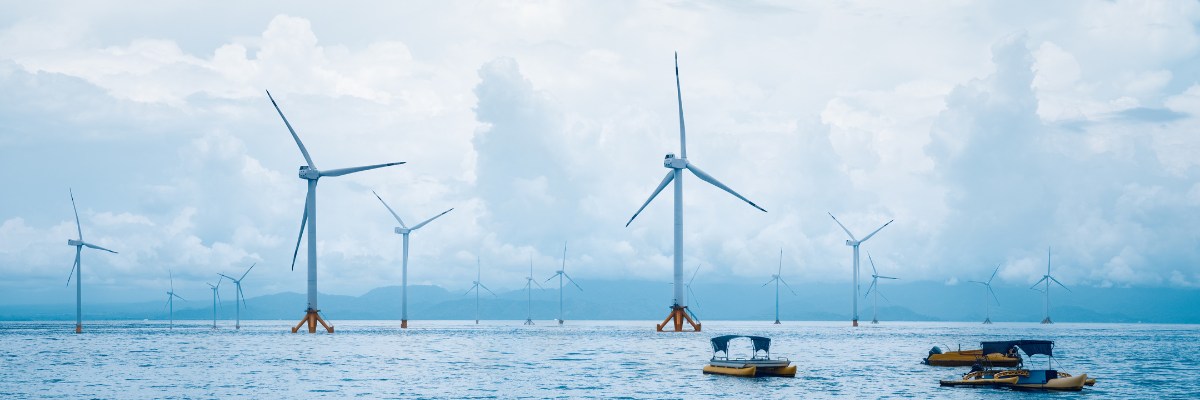In offshore wind farms, a subtle yet significant force is at play – blockage effects. These detailed interactions between wind turbines and the atmosphere have far-reaching implications for energy production and the design of large-scale wind farms. In Wind Energy Science journal’s, “Investigating energy production and wake losses of multi-gigawatt offshore wind farms with atmospheric large-eddy simulation (LES)”, Peter Baas and his colleagues explore the global blockage phenomenon using atmospheric Large Eddy Simulations (LES) – a high-fidelity, weather modelling technique. In this final blog of our series exploring the complexities of offshore wind farm development, we break down key insights that help expand our understanding of global blockage effects, a phenomenon especially relevant for larger wind farms.
Blockage effects, explained
Blockage effects, inherent to the presence of any obstruction within a flow, exert a distinctive influence on wind farms. The prevailing air naturally flows around and over these obstacles, resulting in an anticipated decrease in wind speed at the wind farm’s front. Consequently, the blockage effect, as it is termed, inevitably leads to a reduction in the wind farm’s energy production. Understanding blockage effects is important as its implications ripple through the entire process of wind farm design and development.

In the middle panel, you can observe the wind speed at hub height. Interestingly, in addition to the evident wake effect downstream of the wind farm, there’s already a noticeable reduction in wind speed ahead of the wind farm. This reduction becomes even more striking when we calculate the ratio of the actual wind speed to the free stream wind speed (i.e., the wind speed unaffected by any wind farm effects). On the left panel, we depict the power losses experienced by each turbine within the wind farms. Surprisingly, even turbines in the easternmost row exhibit non-negligible losses, highlighting the significance of blockage effects.
Insights from the study
The research led by Baas et al. undertakes a thorough exploration, scrutinizing annual energy production and wake losses over a full year of real weather conditions. Among their findings, is this interesting insight – the blockage effect is not uniform. It varies with atmospheric conditions and wind speeds.
The research findings estimate that the yearly average global blockage effect hovers between 2% and 3%. Yet, under specific conditions, especially for wind speeds around 8 m/s and stable atmospheric conditions, this effect can surge remarkably to over 10%. This emphasizes the significance of accounting for these effects accurately and incorporating it strategically into planning processes.
Implications for larger wind farms
The research by Baas et al. suggests that blockage effects may hold even greater relevance for the new generation of multi-gigawatt wind farms, similar to those envisaged for the IJmuiden Ver zone, where clustering of wind farms tends to prevail. The study also highlights the interactions between wind speed, atmospheric stability, and boundary layer height. Understanding these factors is key to accurately measuring wake losses and improving wind farm efficiency.
Leverage Whiffle’s LES model to accurately account for aerodynamic losses in your wind farm projects
Baas et al.’s research harnesses a high-fidelity, wind modelling technique rooted in Large Eddy Simulation (LES). With our newest web application, Whiffle Wind, we’ve now made it possible for anyone to harness LES-powered weather modelling technology – regardless of your technical background. Curious? Visit: https://whiffle.nl/get-free-trial/ and we’ll get you started right away.
